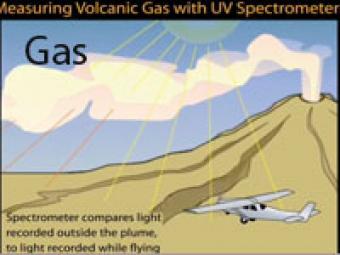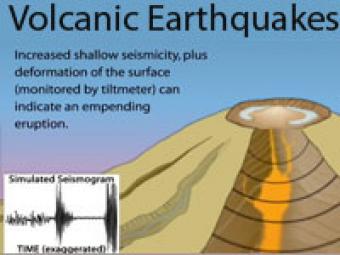
What can the gas emissions tell us about a volcano?
Magmatic gas is the driving force of volcanic eruptions. As the magma rises to lower pressure it causes the magma to expand rapidly (think agitated champagne being released from the pressure of the bottle). A primary objective in gas monitoring is to determine changes in the release of certain gases from a volcano, chiefly carbon dioxide and sulfur dioxide. Such changes can be used with other monitoring information to provide eruption warnings and to improve our understanding of how volcanoes work.
CLOSED CAPTIONING: A .srt file is included with the downloiad. Use appropriate media player to utilize captioning.

Volcano deformation can provide clues about what is happening deep below the surface. Two techniques used to monitor deformation include Tiltmeters and GPS.

Earthquake activity beneath a volcano almost always increases before an eruption because magma and volcanic gas must first force their way up through shallow underground fractures and passageways. The continuous release of seismic energy is induced by the movement of magma.